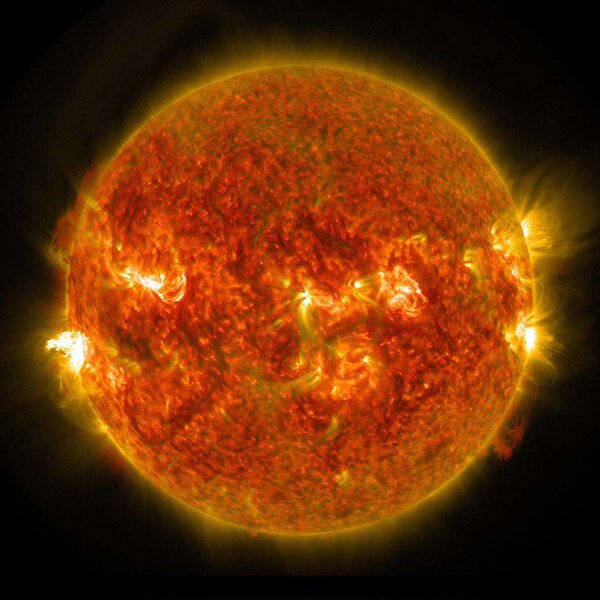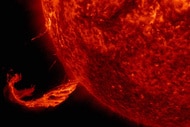Create a free profile to get unlimited access to exclusive videos, sweepstakes, and more!
Could the most massive internet crash ever be brought on by a solar storm?

Earth gets hit with solar storms all the time. Next time your internet goes down, it could be because of one, but what if the whole world was disconnected?
Stars are temperamental, and our Sun is no exception. The massive solar winds blown out with flares and coronal mass ejections release electrically charged, highly magnetized particles that mess with our electric infrastructure, screw up satellites and are hazardous to astronauts on the ISS. Compared to the damage they could do to a planet like Mars, they hardly touch us because of Earth’s magnetic shield (which Mars is missing).
Now that our technology has advanced way past telegraphs, researcher Sangeetha Abdu Jyothi of UC Irvine believes that we should be more concerned. Local internet that uses fiber-optic cables is one thing. The enormous underwater cables that connect entire continents are in danger of being pummeled by geomagnetic currents. How intense of a punch that would be to our global internet, which costs $7 billion a day in outages already, remains unknown. Abdu Jyothi thinks it could possibly be shut down for weeks, if not months on end.
“Solar superstorms that can potentially cause large-scale Internet outages covering the entire globe and lasting several months,” she said in a study she recently presented at the SIGCOMM 2021 data communication conference.
Solar particles are usually scattered by the magnetic shield, usually ending up at the poles and setting off spectacular auroras. There have still been solar events even our planet’s built-in sunblock hasn’t been able to guard against. It is thought that a coronal mass ejection of immense magnitude happens every hundred years. A geomagnetic storm in 1859 made telegraph wires explode in fire and auroras appear in strange places, while a 1989 solar-storm-induced blackout in Canada lasted nine hours, and internet still wasn’t really a thing back then.
We could be just as unprepared to deal with a massive internet crash as we were for the pandemic. The possible consequences haven’t been well researched, and that could mean much more than not being able to access your email. It could involve massive business and communications shutdowns everywhere on Earth. By using existing data, Abdu Jyothi investigated how strong our current internet infrastructure is, which is how she found out that an epic fail is more likely to happen with global underwater cables than land cables.
Up until now, the worst-case scenario events for our internet have resulted in a cyber slowdown. If Earth is right on the path the coronal mass ejection (CME) is following, a surge of energetic, magnetized particles could mean a geomagnetically induced current (GIC) on the surface could end up interacting with the magnetic field, and if the CME is strong enough, its powerful particles would course through underwater cables. The US is especially prone to disconnection, with a much higher risk of the internet going dark than most of the world.
“GIC is primarily induced in ‘long conductors’ since the current is proportional to the area of the loop formed by the two grounds and the cable,” Abdu Jyothi said. “Hence, power grids, oil and gas pipelines, networking cables, etc. are most vulnerable.”
For undersea cables, it doesn’t help that seawater is so effective at conducting electricity (because of salt ions). Conductive seawater washing over rocks that are resistant to electricity actually boosts the conductivity of the surface, and therefore the impact a potential GIC could have. What makes extremely long cables, which stretch over hundreds or thousands of miles, more susceptible is that they have a power feeding line. This is a conductor that connects repeaters on the cables, and being a conductor, it goes without saying that it would get completely attacked by a GIC.
At least there is no ginormous geomagnetic storm in the forecast, but be warned that it has been a hundred years since the last major one in 1921. Hold on to your WIFI.















